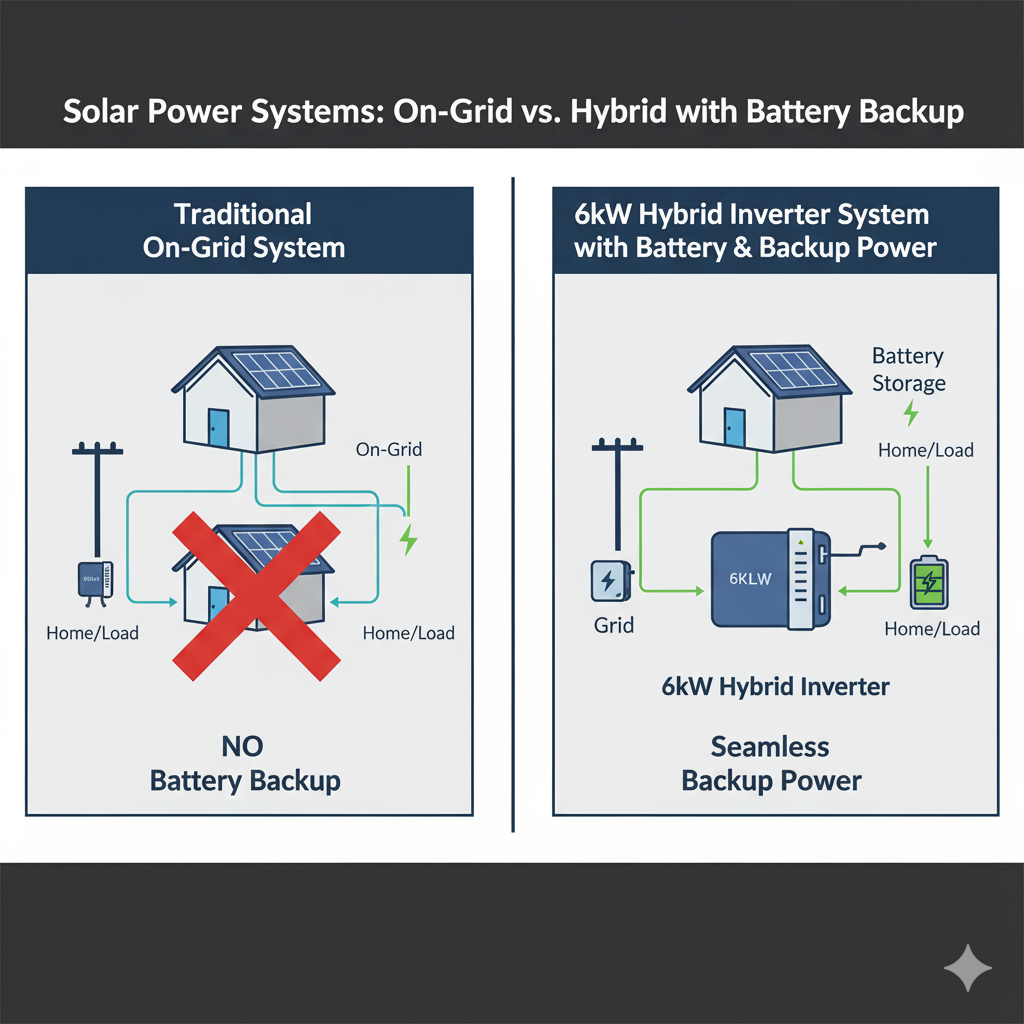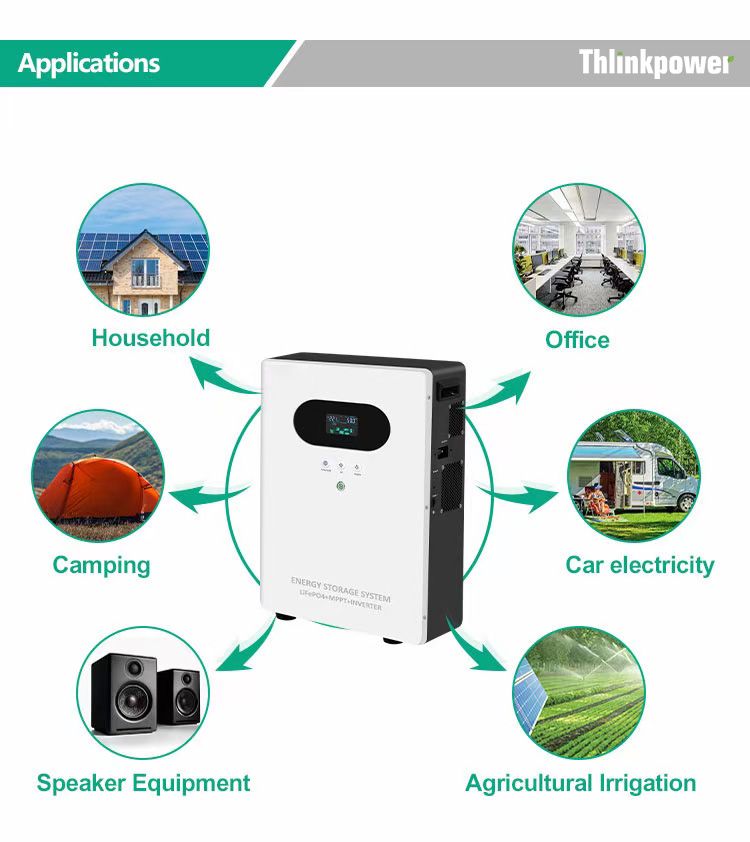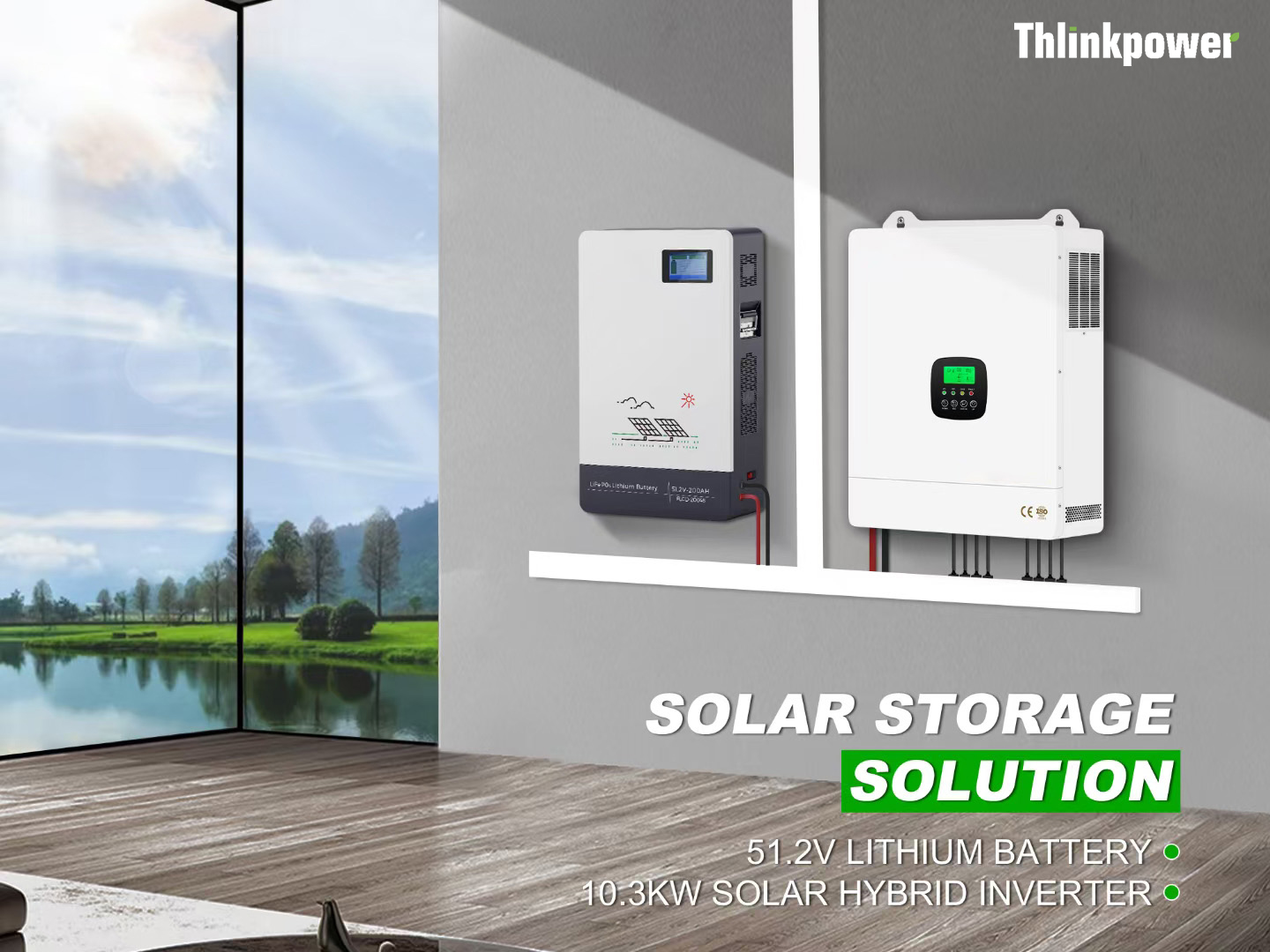
Comparing On-Grid vs. Hybrid: The Added Value of a 6kW Hybrid Solar Inverter
For years, on-grid inverters dominated the rooftop solar market, offering a straightforward way to feed power directly into the grid. But as households and small businesses demand more independence, hybrid inverters—especially the versatile 6kW range—are becoming the preferred choice. By integrating solar generation with storage and backup capabilities, hybrid inverters add layers of flexibility that on-grid systems alone cannot provide.
How On-Grid Inverters Serve the Basics
On-grid inverters remain an efficient and cost-effective solution for grid-connected users. They convert DC from solar panels into AC and export surplus to the utility network. Their strengths include:
-
Lower upfront costs compared to hybrid systems.
-
Simple installation with no batteries required.
-
Eligibility for feed-in tariffs or net metering policies in many regions.
However, their limitation is clear: when the grid fails, so does the power supply, leaving consumers vulnerable during outages.
Why Hybrid Inverters Deliver Greater Independence
A 6kW hybrid inverter builds on the same conversion principles but integrates energy storage and smart switching. This ensures that power flows continue even when the grid is down. Key advantages include:
-
Backup capability: Seamless switchover to batteries during outages.
-
Flexible energy use: Prioritize self-consumption, storage, or grid export.
-
Future-proof design: Batteries can be added later without replacing the inverter.
Hybrid inverters are particularly appealing in areas with unstable grids or rising electricity tariffs, where the value of autonomy is increasing.
On-Grid vs. Hybrid at a Glance
| Feature | On-Grid Inverter | 6kW Hybrid Inverter |
|---|---|---|
| Grid Dependency | Full reliance on grid | Operates with or without grid |
| Backup During Outage | Not available | Automatic battery switchover |
| Upfront Cost | Lower | Higher (offset by long-term savings) |
| Energy Flexibility | Export only | Export + self-use + storage integration |
| Scalability | Limited to grid-tied setup | Expandable with batteries and smart control |
Practical Applications for Daily Life
-
Residential homes: A 6kW hybrid inverter supports average daily loads while providing backup for essentials like refrigerators, Wi-Fi, and lighting.
-
Small businesses: Hybrid systems ensure continuity for IT servers, workshops, and critical equipment.
-
Community facilities: Clinics or schools benefit from reduced downtime and safer energy supply during blackouts.
By balancing savings with security, hybrid inverters create a smoother energy experience across diverse scenarios.
Questions People Ask About On-Grid vs. Hybrid
Q1: Is the higher cost of hybrid inverters justified?
Yes. While the upfront price is higher, hybrid inverters deliver long-term value by reducing outage risks, enabling storage, and optimizing tariffs.
Q2: Can I start with an on-grid system and upgrade later?
Upgrading is possible but often involves replacing the inverter. Starting with a hybrid model avoids duplicate investment.
Q3: Are hybrid inverters efficient when used without batteries?
Absolutely. A 6kW hybrid inverter can operate as a standard on-grid inverter until batteries are added, making it a flexible choice.
Unlocking the Added Value with Thlinksolar
The comparison is clear: on-grid inverters provide simplicity, but 6kW hybrid inverters deliver independence, flexibility, and resilience. For homeowners and businesses, this added value translates into energy security and smarter cost control. At Thlinksolar, we supply certified hybrid inverter solutions that combine efficiency, customization, and long-term reliability.
Learn more on our homepage or connect directly through our contact page to explore the best-fit inverter for your project.



